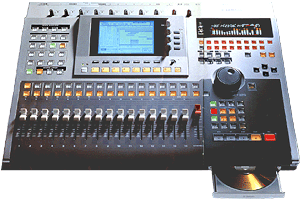 Digital Hearing Aids
Digital Hearing Aids
 Digital Hearing Aids
Digital Hearing Aids
*Digital hearing aids are programmable hearing instruments with digital circuits.
*They can be precisely programmed to match the patient's individual hearing loss, sometimes at each specific frequency/pitch.
*Digital circuits offer improved clarity of sound, less circuit noise, faster processing of sound, and improved listening in noise when compared to analog circuits. Digital hearing aids are easy to use because they adjust volume automatically.
Be aware that digital hearing aids allow for certain algorithm changes so knowing that a music algorithm change can be made is important as students try to hear within a classroom.
Dr. Carol Linsenmeier PhD. Kent State University comments: "The difficulty I see with online music instruction for students who are deaf/hh is the difficulty of hooking into the mp3 world - there are not many good ways to do it. Unfortunately, usually the assistive technology often lags so far behind the technological improvements as for example cell phones."
"I have taught violin to a student with a 90 dB hearing loss who used a
cochlear implant. He often surprised me with his ability to adjust the
pitch of his playing and his ability to remember pitch, but he had a very
difficult time understanding the concept of rests in the music. Since not
all frequencies may be activated in a cochlear implant, the timbre of sounds may
be affected. If a student has pre-hearing loss musical training, they may
be able to hear music in their head."
| *Protools, iMac, and Yamaha Digital Audio Workstations are utilized in developing and testing advanced signal processing features to individualize digital hearing aids. |  |
*For optimum results and to see if the hearing algorithm is working a sound field is mixed and developed that presents as naturally as possible competing sounds (maskers) from 'all around' the listener. – much as you would have in a real environment is needed. |